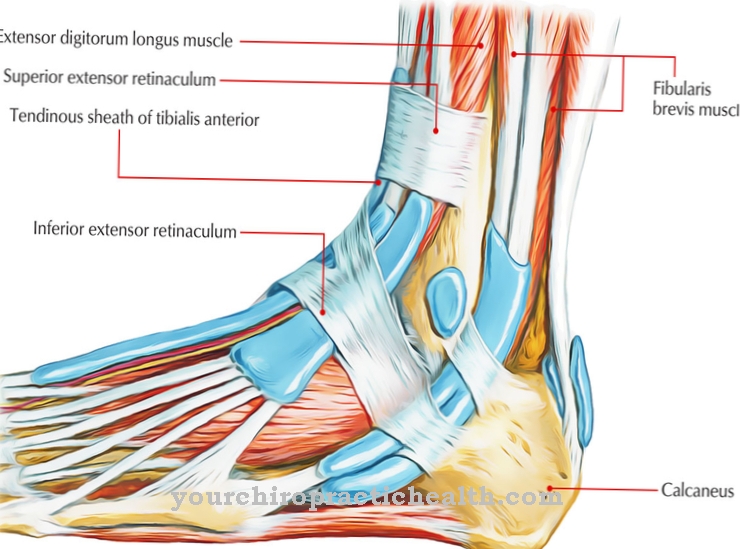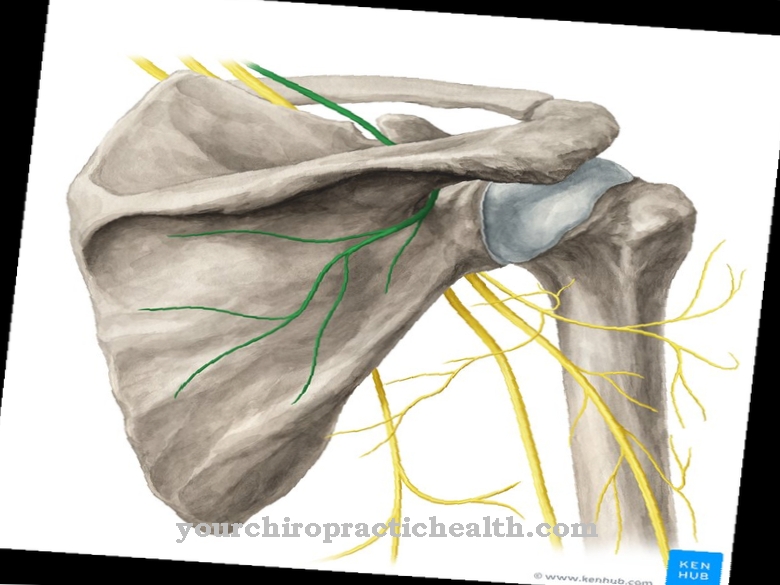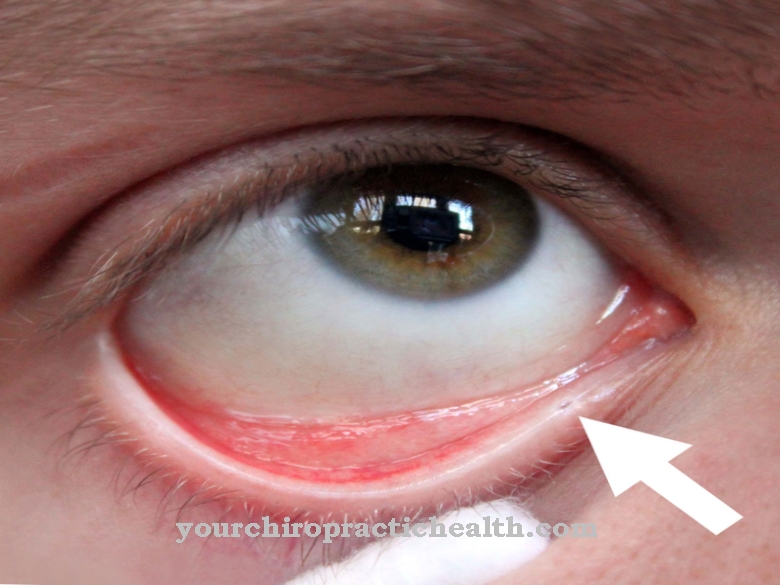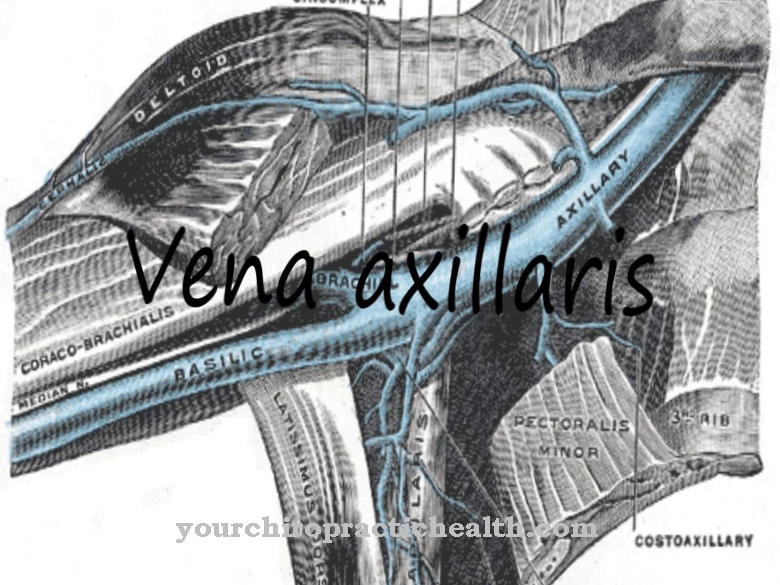Of the Maxillary nerve is part of the 5th cranial nerve. It takes care of a large area of the face. In particular, the area below the eyes to the jaw is innervated by it.
What is the maxillary nerve?
The maxillary nerve is assigned to the cranial vein. This is the trigeminal nerve. The V cranial nerve is the largest of the XII. Cranial nerves. It is part of the central nervous system and its branches cover the supply of the entire face.
These are divided into the ophthalmic nerve (V1), the maxillary nerve (V2) and the mandibular nerve (V3). The maxillary nerve is therefore the second main branch of the trigeminal nerve. Its fibers are purely sensitive. This means that they are particularly sensitive and pick up signals from conscious body sensations. The maxillary nerve supplies the skin of the face and parts of the mucous membranes.
The area of the face between the lower eyelid and the upper lip belongs to the supply area of the maxillary nerve. In addition, an area of the sinuses and the upper jaw is innervated by it. Its effect extends to the roots of the teeth. Since it acts on the jaw, the maxillary nerve is also known as the maxillary nerve. During dental treatment, one of the terminal branches of the maxillary nerve is numbed.
Anatomy & structure
As the second main branch of the trigeminal nerve, the maxillary nerve runs along the basolateral wall of the cavernous sinus after exiting the ganglion. After releasing the ramus meningeus, it enters the foramen rotundum through the base of the skull.
The ramus meningeus supplies the dura mater. The maxillary nerve emerges below the base of the skull and appears below it in the pterygopalatine fossa. At this point the maxillary nerve divides into three further terminal branches. These are the ganglionic rami, the zygomatic nerve and the infraorbital nerve. The rami ganglionares emerge from the vegetative pterygopalatine ganglion and extend to the mucous membrane of the turbinate. They end in the hard and soft palate.
The zygomatic nerve pulls from below into the eye socket, continues to the lacrimal gland and then pierces the cheekbone. In this way, its fibers innervate the skin over the zygomatic bone and the anterior temple area. Like the zygomatic nerve, the fibers of the infraorbital nerve emerge from the inferior orbital fissure. From there they pull into the skin area of the cheek up to the jaw.
Function & tasks
In general, the maxillary nerve supplies large parts of the facial skin of the cheek. The skin is completely innervated by it in the entire area between the eyes and the lip. The meningeal branch, part of the maxillary nerve, supplies the dura mater. It is part of the meninges. This separates the brain from the skull and envelops it.
The Rami ganglionares innervate the mucous membrane of the turbinates, the region of the ethmoid cells and that of the hard and soft palate. The palate includes the roof of the oral cavity and the floor of the nasal cavity. The zygomatic nerve is responsible for supplying the lacrimal gland and the anterior skin area of the temples lateral to the eye. This is the area above the temporal bone. The temporal bone is called the temporal bone. It includes the middle and inner ear and extends to the temporomandibular joint. In addition, the zygomatic nerve supplies the skin region over the zygomatic bone. The zygomatic bone is called the zygomaticum and forms the boundary to the eye socket, the so-called orbit.
The infraorbital nerve supplies the skin area of the cheeks between the lower eyelid and the upper lip. This is the area of the maxillary sinus called the maxillary sinus. Further lower branches of the infraorbital nerve lead to the pain-sensitive teeth of the upper jaw. He cares for all teeth of the upper jaw.
You can find your medication here
➔ Medication for toothacheDiseases
Because of the ramifications, a complete failure of the maxillary nerve is very rare and can be assessed as rather unlikely. In the case of impairments, it is more likely that individual branches are affected. These then lead to an insensitivity of the corresponding skin region.
This can happen when local anesthesia is applied to the face area. In the case of dental treatments, this can occur, for example, and lead to a loss of sensitivity in the affected skin area. In oral surgery, various injuries and irritations of the nerves in the mouth, jaw and face are among the risk factors.
The fracture of the zygomatic bone can also cause the nerve fibers in this area to be damaged or compromised. Sensitivity disorders or even numbness of the skin region can occur. As a result, the corner of the mouth may droop or the eye cannot be closed properly. Injured nerves in the facial area can regenerate. An injury usually heals without surgery if the nerve has only been squeezed or stretched.
If the nerve fibers have been partially or completely severed, a nerve transplant can be carried out through a surgical procedure. Even if there is no guarantee that the damaged nerve will regenerate completely, a chance of recovery within several months is conceivable.
Hypersensitivity in some regions is more common than failure of individual branches of the maxillary nerve. This means that even the smallest touch stimuli can trigger pain or even pain attacks. This is particularly common in the area of the teeth. A tooth inflammation can then lead to an almost unbearable pain.



























